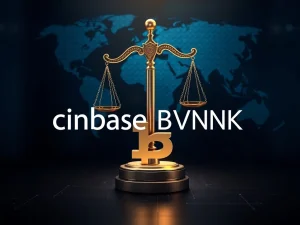Urgent Crypto Policy Trends in 2025: Privacy, Development, and Adoption Insights

The world of digital assets is rapidly evolving, and staying informed about the latest developments is crucial. In 2025, one area demanding significant attention is **crypto policy**. Far from being a niche topic, the rules governing cryptocurrencies, blockchain, and Web3 are shaping the future of finance and technology globally. Understanding these evolving frameworks is essential for developers, businesses, and users alike. Let’s dive into the key trends defining the **crypto policy** landscape in 2025.
Why Crypto Regulation Matters More Than Ever
**Crypto regulation** is solidifying its role as a fundamental element of the digital asset ecosystem. It’s the rulebook covering everything from taxes and Anti-Money Laundering (AML) to licensing and user protection. In 2025, most countries acknowledge the need to address digital assets. The challenge for governments is balancing protection with innovation. For companies, it’s navigating different rules across borders.
Digital assets are increasingly classified as financial instruments by bodies like the US Securities and Exchange Commission (SEC) and the Financial Action Task Force (FATF). This shows a deeper institutional understanding and signals that crypto is becoming part of mainstream legal structures. Legal clarity is now a significant driver of **crypto adoption**, not just a background detail.
How Policy Clarity Drives Crypto Adoption in 2025
One major trend in **crypto adoption** this year is its connection to policy. Clearer laws are enabling more users, both retail and institutional, to enter the market. Countries with proactive frameworks are seeing positive results. For example:
- Brazil and the UAE have used clear regulations to support government-backed exchanges and CBDC pilots.
- Businesses like Circle are integrating digital assets for payments, like their partnership with Onafriq to lower cross-border costs in Africa.
Conversely, regions with unclear or hostile regulations see adoption slow down. Legal definitions for asset classes (utility tokens, payment tokens, investment assets) are also helping reduce ambiguity, making it easier for exchanges and developers to operate lawfully.
In the US, 2025 saw shifts with the SEC forming a new Crypto Task Force aiming for a more collaborative framework. Early actions include repealing SAB 121 and outlining plans for token offerings, custody, and staking, suggesting a move away from an enforcement-first approach.
Crypto Privacy: The New Regulatory Battleground
The debate over privacy tools is becoming a central focus in **crypto policy**. Regulations in the EU, US, and UK are increasing KYC and reporting for self-custodied wallets, privacy coins, and DeFi interfaces. The FATF continues to push Travel Rule compliance into new areas.
Developers and users of privacy tools (mixers, zero-knowledge proofs, stealth addresses) face scrutiny. While regulators see these tools as enabling crime, advocates argue they protect civil liberties. This tension highlights fundamental questions about anonymity: Is it a criminal risk or a civil right? Expect legal challenges and technological efforts to balance privacy and transparency.
Defining Legal Responsibility for Blockchain Development
Regulators are increasingly defining responsibilities for those involved in **blockchain development**. As protocols become decentralized, lawmakers are looking at developers. This trend includes proposals defining the liabilities of smart contract authors and open-source contributors.
Points of discussion include:
- Mandatory licensing for DAO tools or DeFi protocols.
- Required audits, usage disclosures, or back-end controls.
Cases like the CFTC’s action against Ooki DAO show that DAOs can be treated as liable entities, potentially exposing developers and tokenholders. The SEC’s guidance in April 2025 requires smart contract code defining investor rights to be filed, placing direct responsibility on coders. The EU’s MiCA framework also adds pressure via mandatory audits for service providers. Critics worry this harms open-source work, while supporters say it protects users. The question of intent versus impact for code is now a legal issue.
Global Crypto Regulation: Fragmented Yet Advancing
Progress in **crypto regulation** is global but uneven. Jurisdictions like Singapore and Switzerland offer clarity, while others are still developing their rules. The EU’s MiCA legislation is now largely in effect, providing a unified rulebook for tokens, stablecoins, and service providers. This has led to adjustments by major exchanges.
The US faces internal debate between different proposed bills regarding federal oversight. Meanwhile, Latin America is becoming a hub for stablecoins, integrating them into daily finance (Brazil’s Drex, Argentina’s use of USDT/USDC). Other countries like Nigeria and South Africa show varied approaches, from tightening control to granting licenses. Singapore and Vietnam are building frameworks, and Ethiopia is emerging in mining.
New experimental zones, like tokenization sandboxes in APAC, allow testing of tokenized assets under supervision. Central banks are also exploring onchain monetary policy with projects like BIS’s Project Pine.
Adapting to Decentralized Protocols and Web3 Governance
Policy trends are moving beyond assets to protocols and governance. Governments are figuring out how to regulate DAO governance, decentralized identity (DID), and onchain credentials. A key question is liability in decentralized systems. New compliance models are emerging, involving third-party attestors, smart contract ‘guardrails,’ and zero-knowledge KYC.
Experiments with self-regulatory organizations (SROs) and blockchain audits are ongoing. DID is being tested as a compliance tool that respects privacy, with examples like Ethiopia’s FaydaPass and Kenya’s Maisha Namba program exploring decentralized features.
Compliance Gets Smarter with AI and Regtech
AI and regtech are changing how compliance is handled in crypto. As rules increase, so does the need for automation. **Crypto policy** changes are increasingly powered by AI and analytics tools that monitor risk, verify transactions, and generate reports. Firms like Chainalysis and Elliptic use AI to track illicit funds. Independent investigators like ZachXBT also play a role in exposing fraud, sometimes faster than agencies.
Hybrid services are appearing as regulatory plugins for smart contracts, enabling compliance as code. Regulators are also using these tools to detect market abuse. This shift toward ‘regtech’ could standardize enforcement and risk scoring, potentially building compliance features directly into wallets and DApps for automatic updates.
Staying Ahead of the Crypto Policy Curve
**Crypto policy** is moving towards modular frameworks designed for global reach. The next phase isn’t about single rules but adaptable layers. Expect base consumer protections, optional compliance layers, and innovation zones. Global coordination is increasing through frameworks like the OECD’s Crypto-Asset Reporting Framework (CARF) for cross-border tax data sharing. Countries like Australia, New Zealand, Switzerland, the UK, and Canada are implementing or planning CARF adoption by 2026-2027. In this future, regulation will adapt to transaction type, user identity, and jurisdiction. Crypto is integrating with regulation, layer by layer.
Keeping pace with these rapid developments in **crypto regulation**, **crypto policy**, **blockchain development**, **crypto privacy**, and **crypto adoption** is vital for anyone participating in the digital asset space. The trends of 2025 show a maturing industry where legal frameworks are not just reactive but actively shaping its future.







